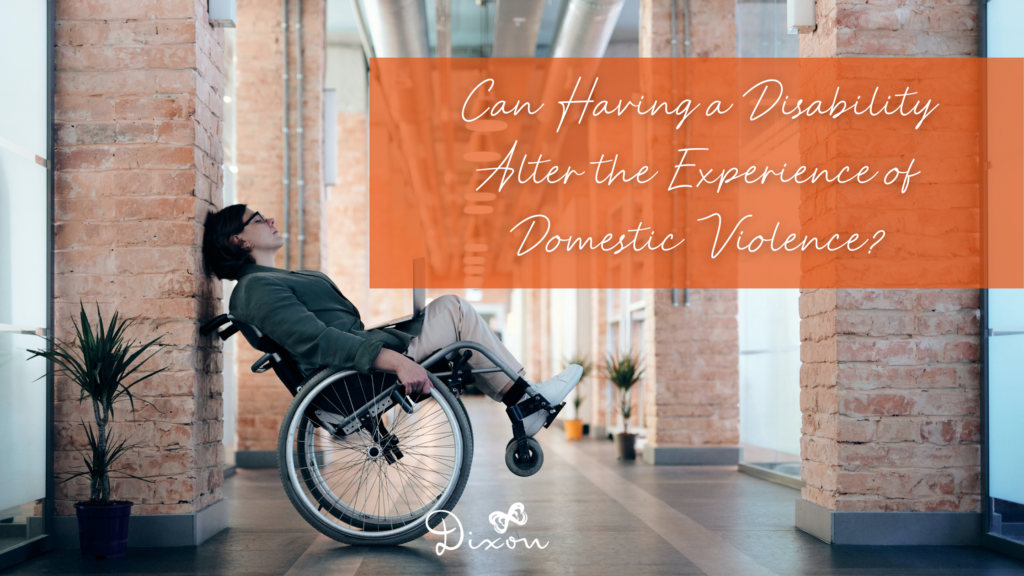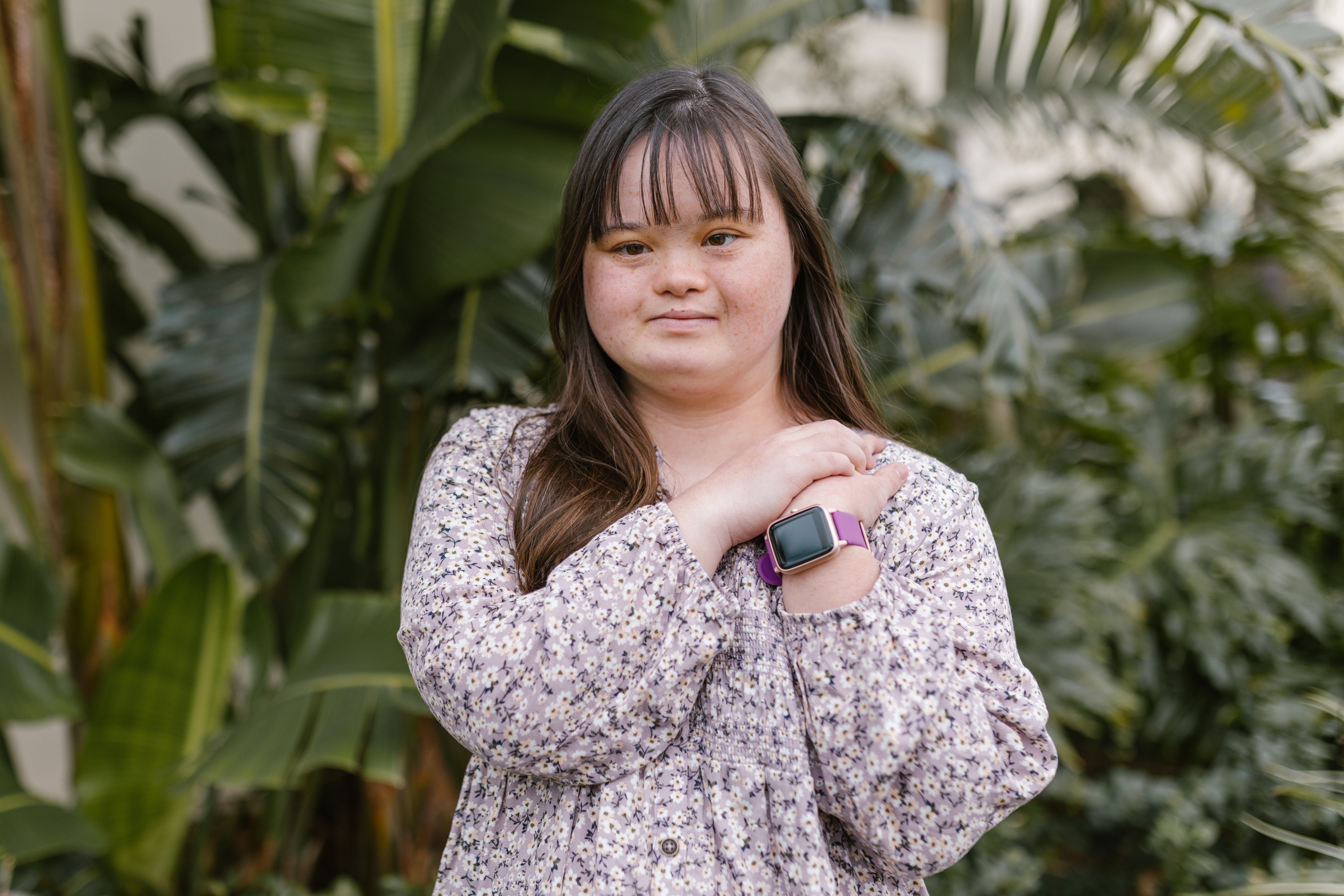
Women living with one or more disabilities disproportionately experience violence, including domestic violence. In fact, compared to non-disabled women, they are nearly twice as likely to experience sexual or physical assault by an intimate partner in their lifetime.
Living with a disability can also impact the way abuse is experienced. How a disability affects one physically, mentally, financially, or otherwise could become something an abuser uses against a woman.
The way women experience abuse can also be influenced by their disability. The physical, mental, financial and other implications of their disability could potentially be exploited by their abuser.
Further, the challenges faced because of a disability can add an additional layer of hardship when fleeing. Finding a safe space that provides all the necessary amenities to accommodate unique needs can be difficult for a woman living with one or more disabilities. Today we dig deeper into how having a disability changes the way abuse and fleeing an abuser is experienced.
Elevated Risk
While over one in five women in Canada identifies as having a disability, about 45% of all violent crimes, including physical assault, robbery, and sexual assault, victimize women living with disabilities. These reports also show that women with disabilities are 4 times more likely than those without disabilities to experience sexual assault.
Furthermore, 55% of women with one or more disabilities report experiencing intimate partner violence, compared to 37% of non-disabled women.
Disabilities go beyond physical aspects as well. People living with mental or behavioural disabilities experience domestic violence at a rate 4 times higher than those with none.
Having a disability may lead to increased isolation or reliance on intimate partners for everyday support. This can lead to abusers treating a woman’s disability as a reason to exert control or power over them.

Disability Can Change How Domestic Violence Presents Itself
Women living with disabilities face abuse like non-disabled women. But, they can also face violence that pertains directly to their disability. Abuse against women with disabilities can also manifest as:
- Telling her that she is not allowed to have a pain flare-up. Invalidating or minimizing a disability with claims that she is “faking it.”
- Stealing or withholding Social Security Disability checks.
- Using a disability to shame or humiliate her, including discrediting her parenting abilities because of her disability.
- Neglect, including refusal to help her complete necessary life tasks, including using the bathroom or dispensing medication.
- Withholding or threatening to withhold medication or intentionally giving her incorrect doses by over-medicating or mixing medications in a dangerous or non-prescribed manner.
- Withholding, damaging, or destroying assistive devices, including harming or threatening to harm her service animal.
- Preventing her from seeing a doctor.
- Threatening to “out” her disability to others if it is non-visible or carries a social stigma.
- Using her disability to justify an abusive partner’s behaviour.
These are just some of the forms domestic violence can take when targeting women with disabilities. Unfortunately, some women may face additional difficulties in leaving an abuser.
Because of increased reliance on the abuser to provide everyday support, women must also consider where and how they will receive the resources needed to complete daily tasks. Finding a shelter that will provide them with the necessary accessibility resources can prove to be a very difficult and daunting task.

Resources Available (or Lack Thereof)
Women living with disabilities are nearly twice as likely to face domestic violence, but the transitional housing services available to them are very limited.
According to DAWN Canada, 75% of shelters have wheelchair-accessible entrances, and 66% provide accessible rooms and bathrooms. But, only 22% of shelters provided TTY/TDD telephone equipment for women who are hearing impaired.
17% provided sign language or interpretation services and large-print reading materials to people who are visually impaired. Only 5% of shelters provide Braille reading materials.
Here in the Lower Mainland, only eight transition houses are considered fully accessible.
This lack of resources is largely due to the limited funding available for shelters. The insufficient number of resources to support women living with disabilities means many must try and manage without necessary services. Unfortunately, some women with disabilities do not seek shelter as they know their needs will not be met.
With many shelters lacking the funding to provide services necessary for women living with disabilities, taking the leap to leave their abuser becomes even more challenging, and without the right resources available, the cycle of violence continues.
We at Dixon believe that women of all abilities should feel welcome and safe when seeking shelter. We strive to constantly improve our services and programs to better meet demand, including working to increase our ability to accommodate the needs of all our clients, regardless of their abilities.

Additional Resources
Shelter Safe has a directory of BC transition houses that can be filtered to show shelters with accessibility services.
The Bloom Group provides transition programs specifically geared toward those living with mental health illness or substance use.
‘I’m tired and desperate’ – a disabled victim of domestic violence on her struggle to survive written by Dr. Frances Ryan.
If you are currently living in a violent situation in the lower mainland, Dixon is here 24/7 at 604-298-3454. For services outside of the Lower Mainland, please contact VictimLinkBC at 1-800-563-0808.
If you or your loved ones are in immediate danger, please call 911.
